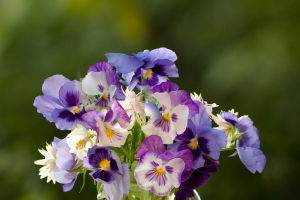Green plants are a crucial part of our ecosystem, as they play a significant role in maintaining the balance of oxygen and carbon dioxide in the atmosphere. They contain chlorophyll, which is responsible for photosynthesis, a process that converts carbon dioxide and water into sugars and releases oxygen and energy.
The oxygen produced by green plants is essential for animals and humans to breathe, while the carbon dioxide they absorb helps regulate the earth's climate.
In addition to their role in the ecosystem, growing green plants indoors also provide numerous benefits for our health and well-being. One of the most important benefits is that they improve indoor air quality.
Green plants can absorb harmful gases such as formaldehyde and benzene, which are commonly found in indoor environments, and release oxygen, which helps purify the air and improve our health.
Studies have shown that having green plants in our homes or workplaces can also help us reduce stress and anxiety. The presence of plants can lower our heart rate and blood pressure, improve our mood, and boost our self-esteem.
Green plants can also improve our attention and productivity, making them ideal for office and learning environments.
Many different types of green plants can be grown indoors, each with its own unique set of benefits. Here are five popular green plants that are suitable for indoor growing:
1. Green Dill: Green Dill is an excellent ornamental plant that can be grown in water or soil. It is beautiful and generous indoors, and can also absorb a variety of harmful substances. Dill is also relatively easy to grow.
During the growth period, it requires only 1 to 2 applications of thin fertilizer and water every month, along with adequate sunlight and ventilation.
2. Lucky Bamboo: Lucky Bamboo is a popular indoor plant with stems and leaves that are full of bamboo rhyme. Planting a few Lucky Bamboos in an indoor vase can make the indoor air fresh and natural.
However, be careful not to add too much water, as this can cause the yellowing of the leaves. Lucky Bamboo also requires nutrient supplementation to ensure healthy growth.
3. Aloe Vera: Aloe Vera is an excellent air-purifying plant that can absorb harmful gases such as carbon dioxide and formaldehyde. Its thick, juicy leaves are dark green in color and have many health benefits. Aloe Vera is also a very good ornamental plant that adds beauty to any indoor environment.
4. Jasmine: Jasmine is a warm and humid plant that requires loose, humus-containing slightly acidic sandy soil for healthy growth. It is an excellent air-purifying plant that can effectively eliminate tuberculosis, Shigella, and other bacteria in the air.
Jasmine also has the ability to clear heat and remove fire, inhibiting bacteria and inflammation, and is an excellent indoor healthy appreciation potted green plant.
5. Cactus: Cactus is a plant with a unique ability to survive in difficult environments without water and soil. It has tenacious vitality and can absorb electromagnetic radiation from electronic devices such as computers, making it an ideal plant to place in front of a computer. Cactus is also an excellent air-purifying plant that can help purify the air at home.
Growing green plants indoors is an excellent way to improve our health and well-being while contributing to the health of our planet. Green plants not only help purify the air and absorb harmful gases, but they also have many other benefits such as reducing stress and anxiety, improving our mood, and boosting our productivity.
With so many different types of green plants to choose from, there is a perfect plant for every indoor environment. So why not start growing green plants today and enjoy the many benefits they provide?


